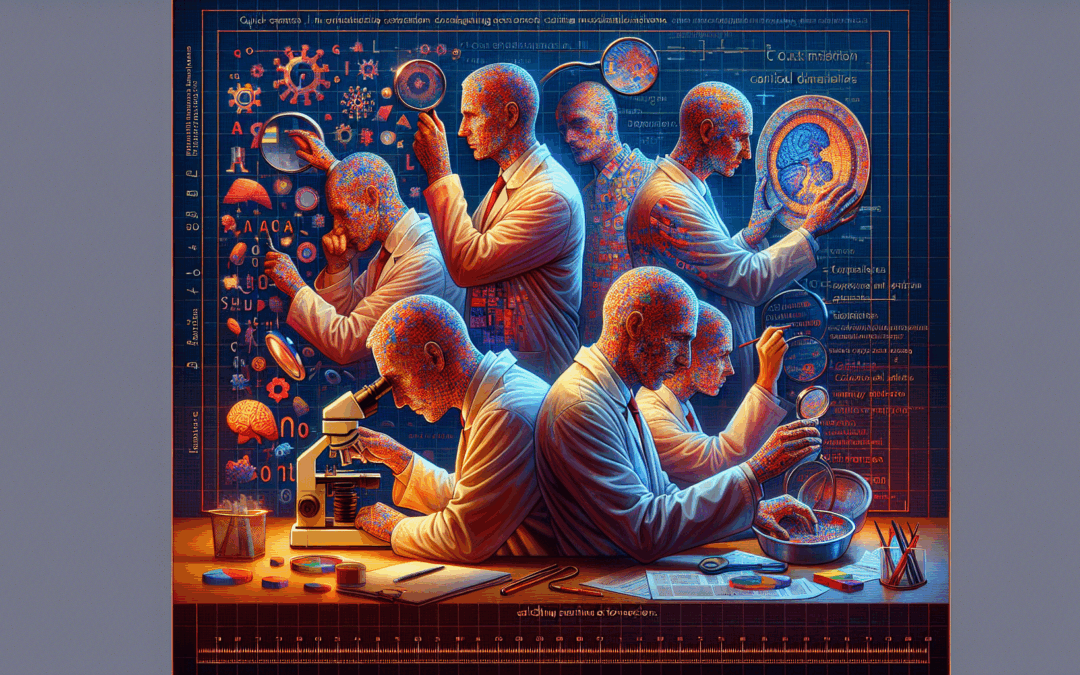Harnessing AI for Enhanced Insights in Radiation Oncology
🧠 In the ever-evolving world of radiation oncology, leveraging AI-based tools for summarizing complex articles can be a game changer. These tools enable researchers and clinicians to quickly and efficiently distill vast amounts of information, ensuring that critical insights are not overlooked amidst the data deluge. With AI, we move beyond generic summaries to tailored insights that resonate with specific research questions, paving the way for more informed decision-making.
🔍 Query-based summarization empowers users to focus on specific questions or aspects of an article, offering laser-focused insights that matter most to their current inquiries. This targeted approach allows individuals to delve deeply into subject matter, extracting the most relevant data while saving invaluable time and effort. In the fast-paced realm of medical research, having the ability to pinpoint precise answers can significantly enhance the quality of clinical assessments and decisions.
📚 Multi-document summarization emerges as a powerful technique that consolidates key information across multiple sources. By removing duplicates and highlighting inconsistencies, this approach ensures that readers have a comprehensive view of the data landscape. Radiation oncology often involves synthesizing findings from various studies, and this method of AI-driven synthesis ensures that no critical piece of the puzzle is missing, ultimately improving patient care outcomes.
🗂️ Topic-based summarization, on the other hand, organizes information by themes rather than traditional source structures. This thematic approach facilitates easier comprehension, especially when dealing with lengthy or complex articles. By presenting data in an organized, thematic manner, these tools aid researchers and practitioners in identifying overarching trends and patterns, crucial for advancing innovation and improving strategies within the field.
💡 As we embrace AI in radiation oncology, we unlock new dimensions of knowledge and understanding. These sophisticated summarization techniques not only save time but also enhance our ability to grasp and apply essential information effectively. In doing so, we empower ourselves to push the boundaries of what’s possible, aspiring toward breakthroughs that were once considered the realm of dreams. Together, through the lens of innovation, we journey toward a future where the pursuit of excellence knows no bounds.
The ideas presented here are derived from the following article:
🧠 In the ever-evolving world of radiation oncology, leveraging AI-based tools for summarizing complex articles can be a game changer. These tools enable researchers and clinicians to quickly and efficiently distill vast amounts of information, ensuring that critical insights are not overlooked amidst the data deluge. With AI, we move beyond generic summaries to tailored insights that resonate with specific research questions, paving the way for more informed decision-making.
🔍 Query-based summarization empowers users to focus on specific questions or aspects of an article, offering laser-focused insights that matter most to their current inquiries. This targeted approach allows individuals to delve deeply into subject matter, extracting the most relevant data while saving invaluable time and effort. In the fast-paced realm of medical research, having the ability to pinpoint precise answers can significantly enhance the quality of clinical assessments and decisions.
📚 Multi-document summarization emerges as a powerful technique that consolidates key information across multiple sources. By removing duplicates and highlighting inconsistencies, this approach ensures that readers have a comprehensive view of the data landscape. Radiation oncology often involves synthesizing findings from various studies, and this method of AI-driven synthesis ensures that no critical piece of the puzzle is missing, ultimately improving patient care outcomes.
🗂️ Topic-based summarization, on the other hand, organizes information by themes rather than traditional source structures. This thematic approach facilitates easier comprehension, especially when dealing with lengthy or complex articles. By presenting data in an organized, thematic manner, these tools aid researchers and practitioners in identifying overarching trends and patterns, crucial for advancing innovation and improving strategies within the field.
💡 As we embrace AI in radiation oncology, we unlock new dimensions of knowledge and understanding. These sophisticated summarization techniques not only save time but also enhance our ability to grasp and apply essential information effectively. In doing so, we empower ourselves to push the boundaries of what’s possible, aspiring toward breakthroughs that were once considered the realm of dreams. Together, through the lens of innovation, we journey toward a future where the pursuit of excellence knows no bounds.
